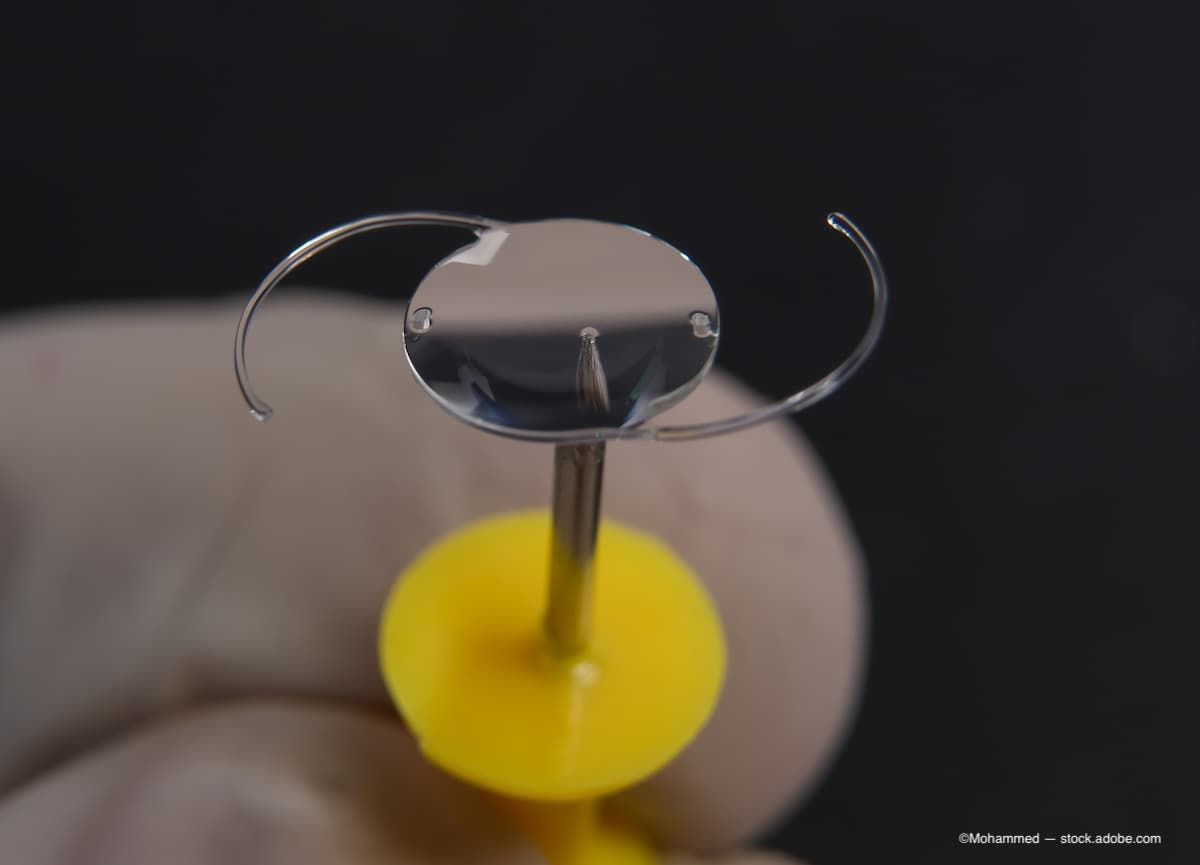Article
ASCRS 2023: Using IOL to alter choroidal thickness after cataract surgery
Author(s):
In a presentation at the American Society for Cataract and Refractive Surgery annual meeting in San Diego, Erisa Yotsukura, MD, PhD, offered details of a study examining an IOL that transmits violet light and a second option that does not, and they believe this can affect differences in the choroidal thickness after cataract surgery.
(Image Credit: AdobeStock/Mohammed)

A team of investigators, including Erisa Yotsukura, MD, PhD, from the Department of Ophthalmology, Keio University School of Medicine, Tokyo, evaluated an IOL that transmits violet light and an IOL that did not. This switch, they believe, can affect differences in the choroidal thickness after cataract surgery.
The researchers evaluated 402 patients (402 eyes) who were to undergo cataract surgery.
The patients were followed for 1 year after the surgery and had been randomly assigned for implantation with ZCB00V IOL (Johnson & Johnson) (group Z, 202 cases; mean age, 68.2 years), which does not transmit violet light. or the W-60R IOL (Santen Pharmaceutical) (group W, 200 cases; mean age, 69.1 years), which transmits violet light partially.
The subfoveal choroidal thickness was measured before and at 3, 6, 9, and 12 months postoperatively. The changes in the choroidal thicknesses were compared and analyzed between the 2 groups from 3 to 12 months postoperatively.
Differences in the IOLs
Preoperatively, there were no significant difference between the 2 IOLs in the logarithm of the minimum angle of resolution best-corrected visual acuity (logMAR BCVA) and the corneal refractions.
The differences in the noncycloplegic objective refractions, the axial lengths and the choroidal thicknesses in the Z and W groups reached significance. They were, respectively, -3.97 and -2.19 D (p<0.01), 24.89 and 24.13 mm (p<0.001), and 213.0 and 236.2 μm (p=0.01).
Postoperatively, from 3 to 12 months, the mean changes in the logMAR BCVAs, noncycloplegic objective refractions, corneal refractions and axial lengths did not reach significance.
However, the changes in the choroidal thicknesses during the same time period postoperatively did reach significance. They were, respectively, -1.79 and 3.48 μm (p = 0.01).
“The IOL that transmits different wavelengths of light during cataract surgery may cause a difference in the postoperative change in the choroidal thickness,” the investigators concluded.
Newsletter
Don’t miss out—get Ophthalmology Times updates on the latest clinical advancements and expert interviews, straight to your inbox.




